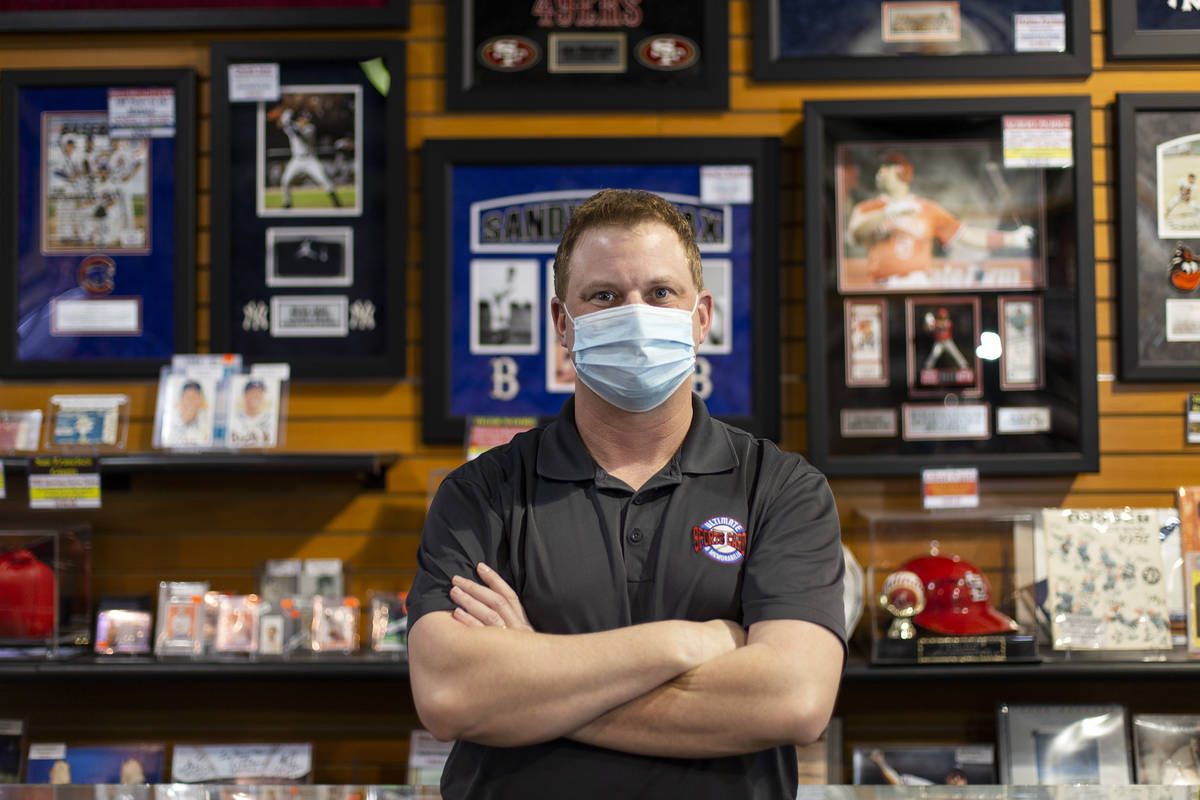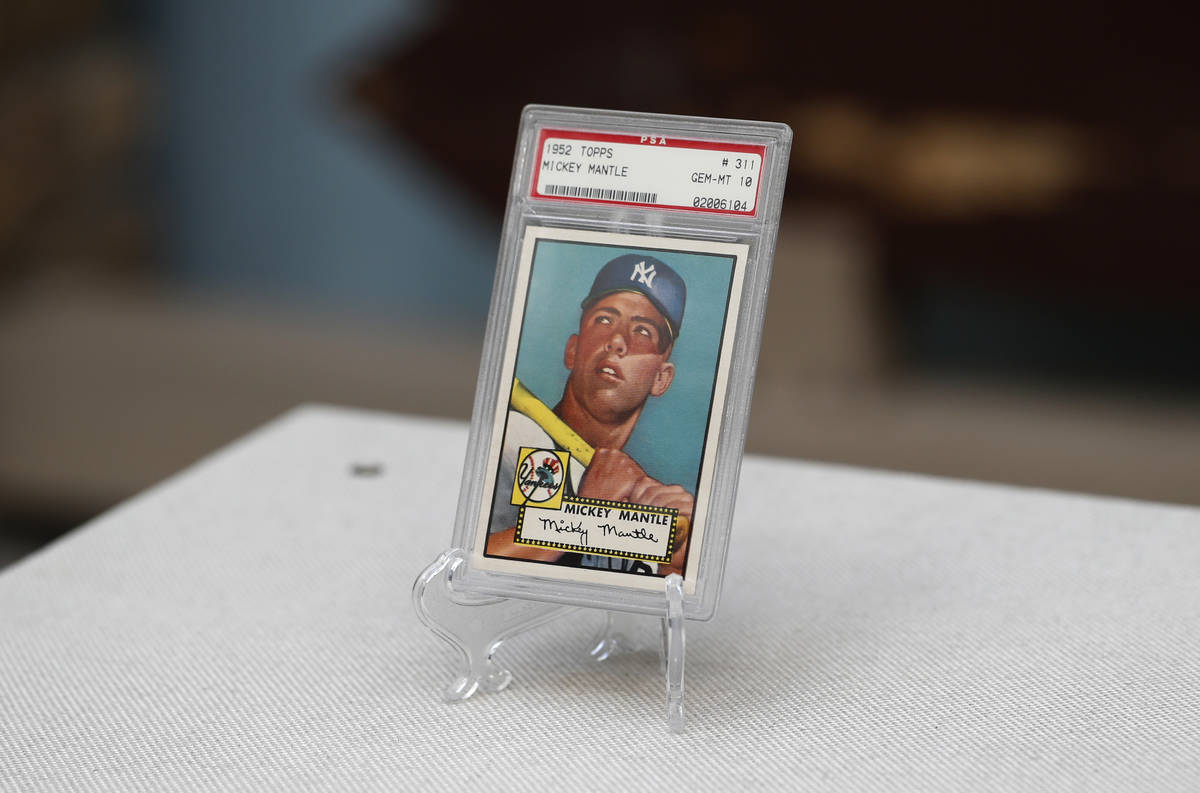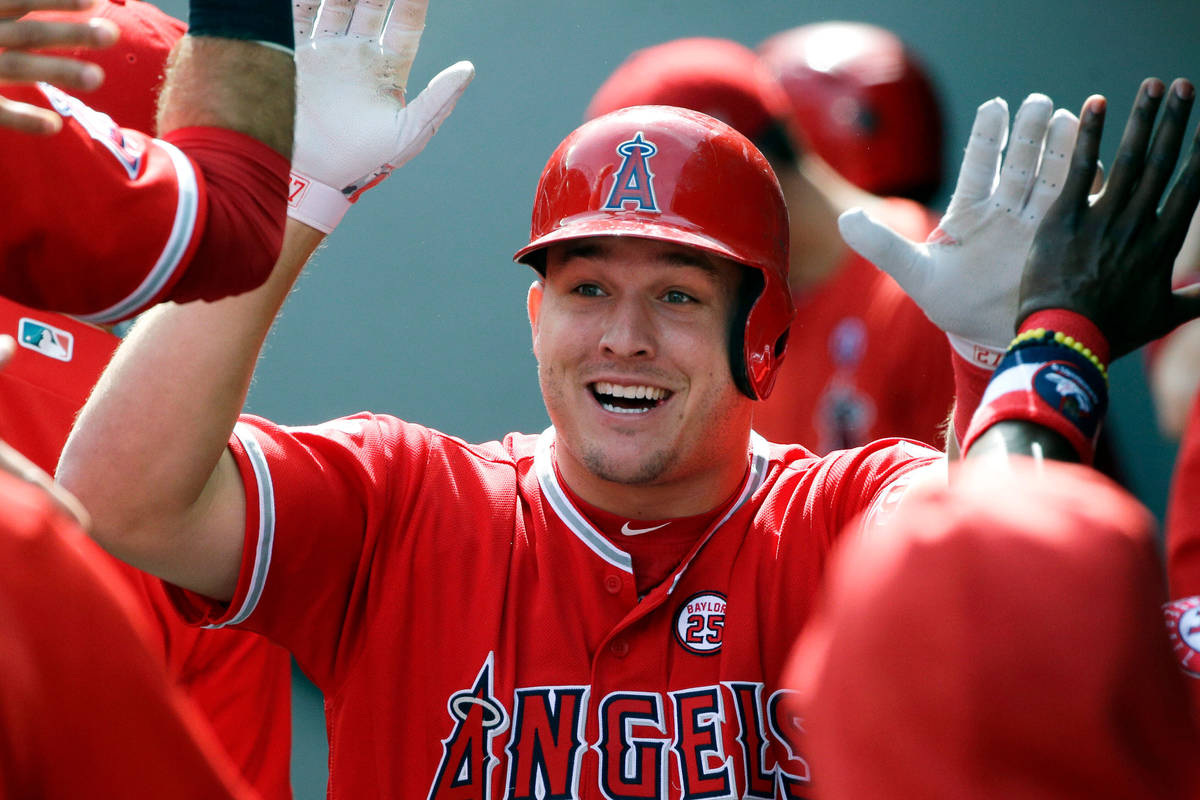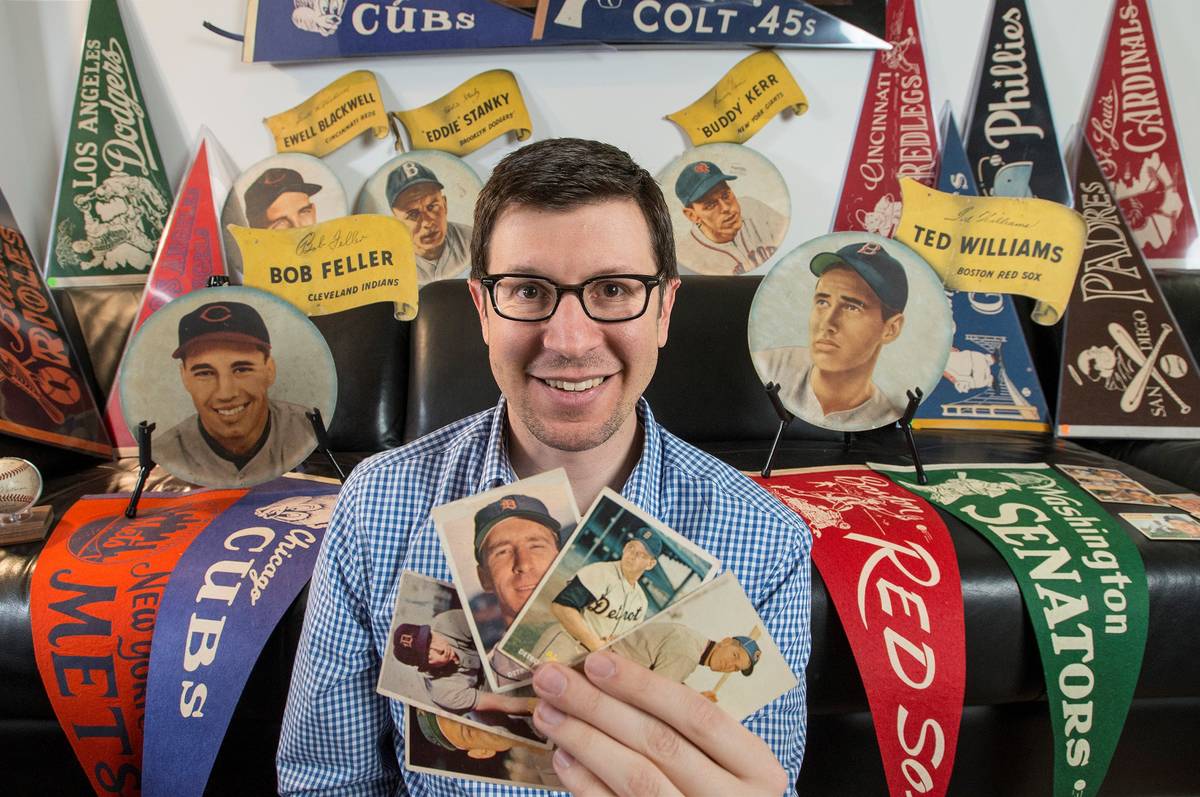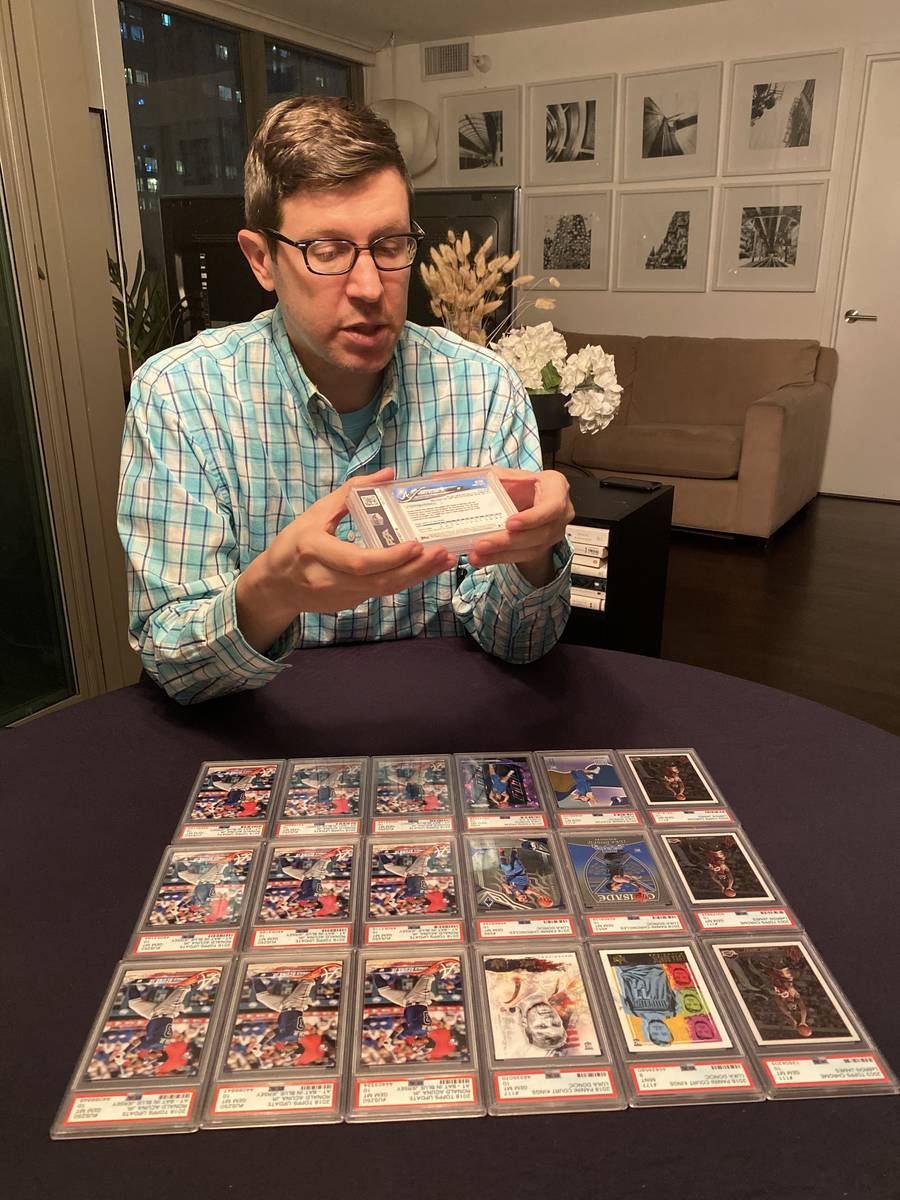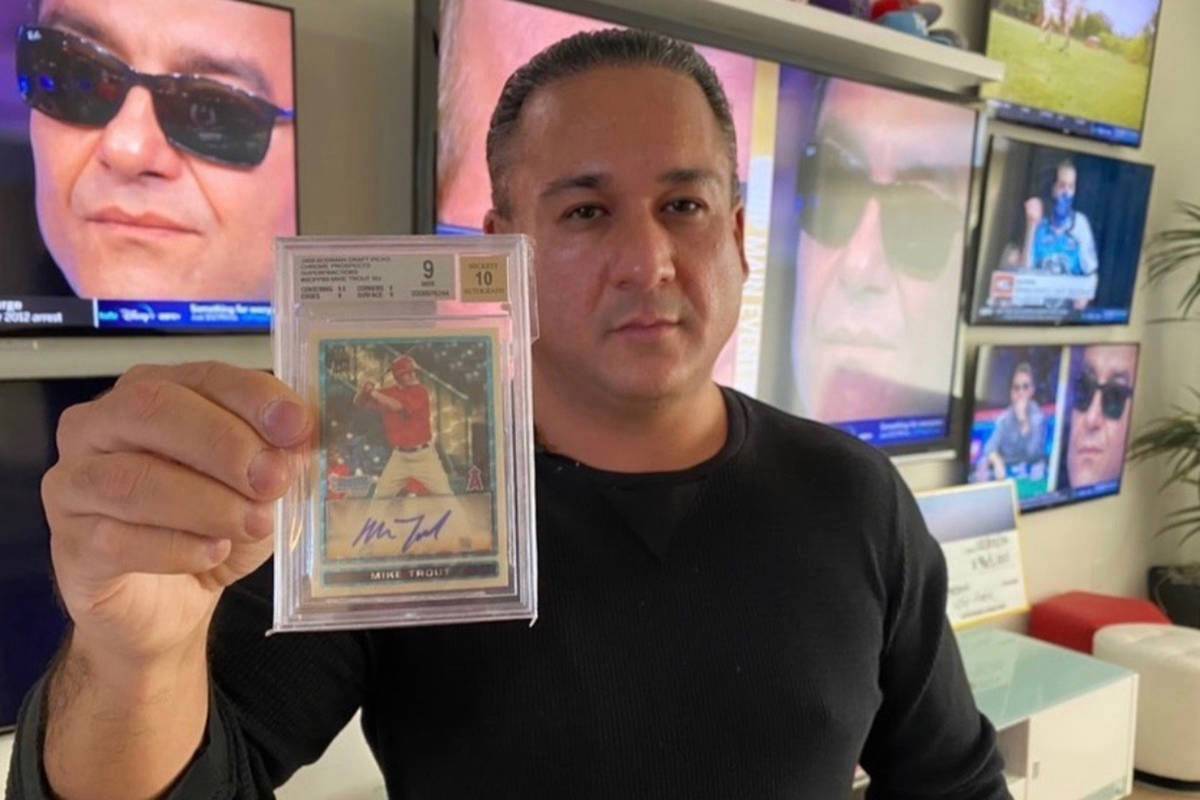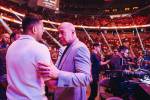Baseball card business booming with million-dollar pricetags
There are those who believe the New York Giants storming from 13 games behind on Aug. 12 to defeat the Brooklyn Dodgers for the 1951 National League pennant on Bobby Thomson’s “Shot Heard ’Round the World” is the greatest comeback in baseball history.
But that was before the recent boom in the slumbering baseball card business, before a 1952 Mickey Mantle card sold for $5.2 million in January and a Mike Trout rookie card owned by Las Vegas sports gambling consultant Dave Oancea was purchased four months earlier for $3.93 million.
Collecting baseball cards — or at least buying and selling the most rare ones — is a big thing again.
Oddly, the business probably never puts on its rally cap were it not for the confluence
of a deadly pandemic and two events — one tragic, one triumphant — pertaining to superstars from another sport.
“People are home, there’s no sports being played, they’re reminiscing — between Kobe Bryant’s death and Michael Jordan’s (“The Last Dance”) documentary, their nostalgia has been rekindled,” said Jeremy Brown, proprietor of the Ultimate Sports Cards And Memorabilia shop on Fremont Street and a regular on the History Channel’s “Pawn Stars.”
Men of a certain age began rooting around closets or their grandmother’s cellars for shoeboxes stuffed with vintage sports cards, Brown said. Bryant and Jordan ones dramatically increased in value. Like Picassos and Rembrandts, they became coveted artifacts. Funds spent for entertainment purposes pre-pandemic are being used to add to card collections or begin new ones.
Even the mom and pop card shops that a generation ago could be found in every strip mall began to flourish again, at least when people were allowed back inside at proper social distance.
Although the majority of the buying and selling of sports cards continues to be done on the internet, “we’ve had our best months ever,” Brown confirmed, referring to his in-store sales.
On a recent day, a steady stream of customers trickled in and out of his shop. Many commiserated about having clothes-pinned Hall of Famer Hank Aaron’s rookie card to the spokes of a Schwinn Sting-Ray bicycle rather than one of utility infielder Mike de la Hoz.
Boom to bust
It wasn’t the first time heavy sighs about not saving cards or using them to replicate engine sounds were heard in a card and memorabilia store. While the surviving shops are now doing fine, internet trading that drove the majority out of business has multiplied.
The reasons for the downfall in collecting cards is fairly easy to pinpoint, said Michael Osacky, lead appraiser for Professional Sports Authenticator, whose card grading system in 1991 — Gem Mint 10 for a card in perfect condition, Poor 1 for one rescued from bicycle spokes — redefined the business.
There was the labor strike of 1994, when a lot of collectors turned away from baseball. That bookended with manufacturers flooding the market with “junk wax.” Millions of overproduced cards produced a tidy profit for Topps, Donruss, Fleer and Upper Deck but ultimately became worthless when supply far outweighed demand.
Then came the internet, which impacted card collecting in the way a three-run homer influences a ballgame.
Before eBay, if collecting cards, you would go to a local card show on weekends to try to find the missing ones. Now, with eBay and other resources, you can wake up in the morning, go online, find cards and they will be shipped the next day.
Others believe the third-party appraisers were an accessory in minimizing the thrill of tearing open a pack of cards in hope that a treasure might be lurking behind the slab of pink chewing gum. (The gum was eliminated in 1991 following complaints from collectors that it was staining the cards.)
It used to be that a card was worth what somebody else was willing to pay for it. Now it’s the appraiser that essentially sets the price. As Brown says, just because one Ken Griffey Jr. card sells for $20,000 doesn’t mean that all will. “To a novice who isn’t in the know, it can be extremely disappointing and very costly,” he said about having cards appraised.
But Osacky said with the worth of sports cards increasing five, 10 or even 20 times in a matter of months, it’s vital to have them graded. Given his job is appraising cards, you would expect him to say that. It’s difficult to argue with his logic, though the process has removed much of the romance from collecting.
As Brown said: “It would be extremely hard for somebody like myself to open a shop just because I had a passion. You’ve got to have large capital, bankroll or some kind of niche connection to athletes or something that sets you apart.”
Collectors vs. profiteers
As for those doing the collecting, “it’s old people, it’s new people, it’s also hedge fund (managers),” Osacky says.
“(Investors) cannot manipulate the stock market with $10 million. But they sure can do a lot of damage in my market with $10 million. They can buy up a lot of cards, and that’s what they’re doing.”
Whereas a pack of baseball cards once went for nickel, a factory-sealed pack of seven 2021 Topps Baseball Series 1 cards cost $29.99 if ordered through the official New York Yankees online shop Wednesday. “It’s borderline not affordable now,” Osacky said about card collecting becoming the domain of the serious investor rather than the casual collector.
Ryan Greene, director of social media for Las Vegas-based Top Rank Boxing, sort of bridges the gap between the two. He started buying sports cards in high school and began to get back into it more seriously recently as an adult. On the day we spoke, he had received PSA appraisal on a box of European soccer cards he had sent away for evaluation.
The former Las Vegas sports writer and Chicago-area native was able to complete his collection of every Walter Payton Topps football card early during the pandemic. “It was a perfect storm that this all boomed right as I was getting back into it.”
Greene said most of his interests are in collecting vintage cards of former heroes such as Payton. But in keeping with a trend that Brown and other shop owners have witnessed, he recently started collecting cards of budding stars such as San Diego Padres shortstop Fernando Tatis Jr.
“Jasson Dominguez of the Yankees has never played a game but some of his autographs are (going for) $10,000, $20,000, $30,000,” Brown said. “If he becomes a phenom, it’s a bargain. But if he breaks his leg and never plays again, then you just threw away 20 grand.”
The bottom line, Brown said, is the bottom line. What once was a pleasurable pastime has morphed into a speculative financial venture.
“There’s a lot of flippers who have no connection to the hobby — they buy it for X, sell it for Y and make money. That’s going to come with every kind of boom, and there’s a lot of that out there,” he said.
Future treasures
The recent revival in sports card collecting notwithstanding, it may only be scratching the surface of an unpredictable future if a recent YouTube discussion called “Collectibles 2.0” is any indication.
One of the hot topics was NBA Top Shot, a website where basketball fans can purchase digital highlights in the manner of trading cards with scarcity determining value. A LeBron James dunk against the Sacramento Kings recently was purchased by a user named “Jesse” for $208,000; another clip of him blocking a shot sold for $100,000.
But as an observer in the chatroom noted: “The classic hobby — buying and selling cards — will always exist. This trend is bringing in new investors to the sports collectible space, but there are so many who still want physical cards.”
The point was driven home toward the end of a two-hour roundtable when noted collectors Darren Rovell and Ken Goldin came on to display a few treasures.
Rovell, senior executive producer of the sports media company, The Action Network, displayed several iconic ticket stubs encased in protective vinyl: from Michael Phelps’ eighth gold-medal winning performance in Beijing, from Game 4 of the 1945 World Series at which the infamous billy goat showed up at Chicago’s Wrigley Field, from Jesse Owens becoming the fastest man in the world with Adolf Hitler looking on at the Olympiastadion in Berlin.
Rovell also held up a credential from the 2008 Olympics. It once belonged to Kobe Bryant and was purchased from Goldin, a renowned sports auctioneer who said he already has done $120 million in sales during the first three months of 2021.
Goldin showed off a Yankees cap worn by Babe Ruth in 1928, a Louisville Slugger that Mickey Mantle had borrowed from teammate Jim Brideweser on the day Mantle was called up in 1951 and the holy grail of baseball cards (belonging to a consignor), a 1909 T206 Honus Wagner showing a bit of wear.
“This actually (was graded) a two. But even though it looks like the card is not in the greatest shape, there are only six in the world with a higher grade than that,” Goldin said with a twinkle in his eye.
That one probably won’t wind up in bicycle spokes with Mike de la Hoz’s rookie card.
Contact Ron Kantowski at rkantowski@reviewjournal.com or 702-383-0352. Follow @ronkantowski on Twitter.
Cardboard treasures
A list of the most valuable sports cards compiled from various internet sources, and their most recent sale price:
1. Mickey Mantle, 1952 Topps, $5.2 million
2. Luka Doncic, 2018 Panini National Treasures, $4.6 million
3. Mike Trout, 2009 Bowman, $3.9 million
4. Honus Wagner, 1909-11 T206, $3.1 million
5. Giannis Antetokounmpo, 2013-14 Panini National Treasures, $1.9 million
6. LeBron James, 2003-04 Upper Deck, $1.8 million
7. Kobe Bryant, 1996-97 Topps, $1.8 million
8. Tom Brady, 2000 Playoff Contenders Championship Ticket, $1.7 million
9. LeBron James, 2003-04 Upper Deck, $1.5 million
10. Michael Jordan, 1997 Upper Deck, $1.4 million



